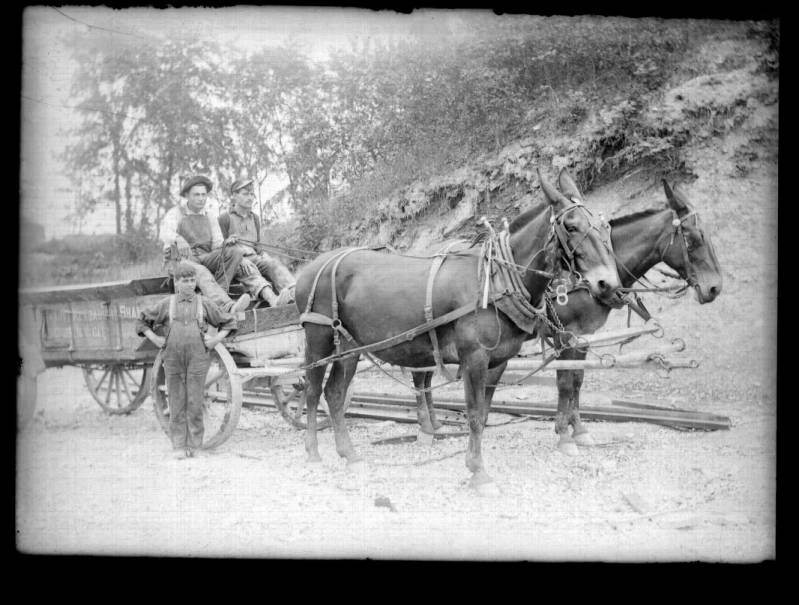By Jericho Walter, Museum Educator
Join us for a moment of appreciation for the mule! Mules are an often-overlooked animal that have played an extremely important role in shaping the natural and cultural landscape of the United States. Here in the Lake Champlain region, and across the country, they were vital in the construction and operation of canals across the country and were highly valued for their unique combination of characteristics that made them ideal for a variety of labor.
The offspring of a male donkey and a female horse, mules have been bred by humans for thousands of years. They are often described as combining the best characteristics of both parents – they have great endurance and an innate sense of self-preservation that keeps them from overworking themselves. They can live for 30-40 years, and work for 15-18.[1] Given their central role in the expansion of the United States, perhaps it’s fitting that George Washington was the first mule breeder in the country.[2] In the South, they were used in agriculture, in conjunction with slave labor. In the West, they were the cogs in the machine of Manifest Destiny. And in the North, they were used on the canals – including the Champlain Canal which connects Lake Champlain to New York City and the New York State canal system.

In addition to their intelligence, mules also have thicker skin than horses and are less likely to get sick, which better protected them while working on the towpaths. A team of mules could pull a boat at about 3 miles an hour and would work upwards of 8 hours a day. Some canal boats had stables in the bow for them. In the winter, they would be boarded in a stable on land. Despite their hard work, we know that some mules were whipped and mistreated by their captains.[3] But for those mules that found themselves with loving owners, they were treated as the pets of the family, and children would ride on their backs while they walked the towpaths.
Throughout the 1800s, the nation’s mule population grew exponentially.[4] Because mules themselves are infertile, their existence requires humans pairing the parents together. They have a multifaceted history that covers their use as tools in the colonial expansion of America to their role as beloved pets. From the first mules of ancient Turkey to the modern American mules, descended from Washington’s first, these animals are closely intertwined with history and culture worldwide, for better or for worse.
Mules played an important role in the canal economy which fostered significant economic growth and wreaked environmental havoc in the Champlain Valley. Learn more about this subject in our exhibit, Underwater Archaeology: Diving Into The Stories of People and Canal Boats on Lake Champlain, which opened this past July 2024 at the Museum alongside our other many exhibits.
[1] NPS.gov.
[3] Canals.org
[4] Mulemuseum.org.


Horses get all the glory, but the mules do all the work!